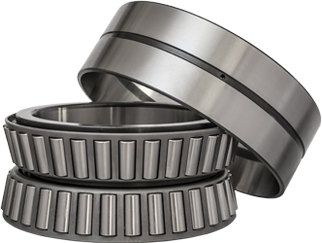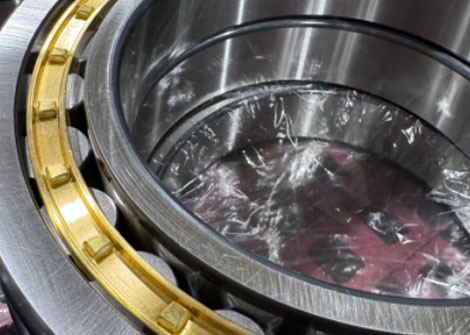
Bearings are dominant parts in mechanical equipment. Its main function is to support the mechanical rotating body to reduce the friction coefficient of the mechanical load during the transmission of the equipment.
There are many types of bearings and their uses. Bearings are classified into radial bearings and thrust bearings according to the different bearing directions or nominal contact angles. According to the types of rolling elements, it is divided into ball bearings and roller bearings. According to whether it can be adjusted, it can be divided into self-aligning bearings, non-aligning bearings (rigid bearings). According to the number of rows of rolling elements, it is divided into single row bearings, double row bearings, and multiple row bearings. According to whether the parts can be separated, it can be divided into separable bearings and non-separable bearings. In addition, there are classifications according to the structural shape and physical size. This article mainly shares the characteristics, differences, and corresponding uses of the 4 common bearings.
There is a contact angle between the ring and the ball. The standard contact angles are 15°, 30° and 40°. The larger the contact angle is, the greater the axial load capacity will be. The smaller the contact angle is, the more conducive to high-speed rotation will be. The single-row bearings can stand the radial load and the unidirectional axial load. The two single row angular contact ball bearings combined on the back of the structure share the inner ring and outer ring, which can bear the radial load and the bidirectional axial load.
The main purpose:
Single row: machine tool spindle, high-frequency motor, gas turbine, centrifugal separator, the front wheel of a small car, differential pinion shaft. Double rows: oil pumps, roots blowers, air compressors, various transmissions, fuel injection pumps, printing machinery.
Double-row steel balls, which have an inner spherical shaped outer ring raceway, are enabled to automatically adjust the axis misalignment caused by the deflection or misalignment of the shaft or housing. The tapered bore bearing can be easily installed on the shaft through the use of fasteners that mainly can bear the radial load.
Main function: woodworking machinery, textile machinery drive shaft, vertical self-aligning bearing with seat.
Spherical roller bearing (SRB bearing) is equipped with spherical rollers between the outer ring of the spherical raceway and the inner ring of the double raceway. According to the different internal structures, it is divided into four types: R, RH, RHA, and SR. Because of the consistency of the arc center of the outer ring raceway and the bearing center, it has the self-aligning performance so it can automatically adjust the axis misalignment caused by the deflection or misalignment of the shaft or housing. Besides, the spherical rollers bearing can stand the radial load and bidirectional axial load.
Main applications: paper manufacturing machinery, reduction gears, railway vehicle axles, rolling mill gearbox seats, rolling mill roller tables, crushers, vibrating screens, printing machinery, woodworking machinery, various industrial reducers, vertical self-aligning bearings with seats.
The spherical roller thrust bearing in this type of bearing is arranged obliquely. Due to the raceway surface is spherical and has self-aligning performance, it can allow the shaft to have a certain tilt, and the axial load capacity is very huge. It can also bear several radial loads, The oil lubrication is generally used when in use.
Main applications: hydroelectric generators, vertical motors, propeller shafts for ships, reducers for rolling screws of rolling mills, tower cranes, coal mills, extruding machine, and forming machines.

